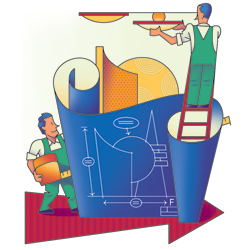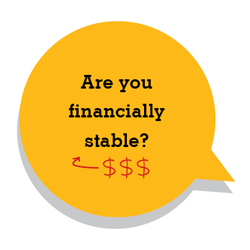 There could be myriad reasons why your exhibit-house invoices are higher than expected. But more likely than not, they fall into one of these four buckets: 1) You made an erroneous assumption about what was included in your contract, 2) some of your own design decisions inadvertently increased your costs, 3) your exhibit house underestimated a service charge related to your exhibit (e.g., installation and dismantle, drayage, etc.), and 4) someone simply mangled the math. Let's examine these options to help you determine which ones are draining your budget and how you can plug the holes.
There could be myriad reasons why your exhibit-house invoices are higher than expected. But more likely than not, they fall into one of these four buckets: 1) You made an erroneous assumption about what was included in your contract, 2) some of your own design decisions inadvertently increased your costs, 3) your exhibit house underestimated a service charge related to your exhibit (e.g., installation and dismantle, drayage, etc.), and 4) someone simply mangled the math. Let's examine these options to help you determine which ones are draining your budget and how you can plug the holes.
Erroneous Assumptions
Roughly 50 percent of exhibit-related billing discrepancies result from improper assumptions. Simply put, exhibit managers often think a charge (e.g., truss, rigging, installation supervision, etc.) is included as part of their exhibit purchase when in fact it's an additional fee. But never assume.
Even if your exhibit house claims the project is turnkey, this term typically means that the firm is responsible for the entire project and you don't need to arrange anything. It usually doesn't mean that the price includes service fees from other providers, such as riggers and caterers. So before you purchase a new build, always ask for a detailed breakdown of all estimated service costs. Then establish a clear picture of what fees are included under your contract and which ones will come out of your pocket later. Also ask for crystal-clear wording in your contract as to who's responsible for which charges so that both you and the exhibit house are on the same page straight out of the gate.
If you didn't establish this clarity early on, now's the time. Sit down with your account executive (AE) to go over your contract and bills. Ensure that you're getting what you paid for and that you have an understanding of what you'll be paying from here on out. If you're being shorted, demand reimbursement. But if your assumptions led you astray, ask your AE to help identify cost savings to offset these unexpected charges going forward.
Costly Design Decisions
Often, the exhibit design that hits the show floor is a far cry from the first rendering your designer placed in front of you. During the design phase you probably changed materials or finishes, added elements, repositioned components, etc. And unless you asked designers exactly how much each one of these alterations would cost your program, you could be in for some serious sticker shock.
For example, did you add a hanging sign above your booth? Then you can expect not only the cost of the sign but also significant rigging fees every time the thing is suspended over your space. Did you trade your rectangular reception desk for a curvaceous beauty? If so, you probably increased the price of that component by 50 to 100 percent to account for additional materials and labor. And when it comes to flooring and finishes, many exhibitors insist on pricey custom colors, when in fact standard and custom colors are often practically identical to the naked eye.
Bottom line, there are countless innocent decisions that could have increased the costs of your exhibit. To know where your funds are going, ask for a final line-item breakdown of your exhibit costs and compare it against the original design. Or simply ask your designer to discuss any additions or changes you made and how these affected your price. Granted, it would have been nice if the exhibit house had pointed out these increased fees at the time you were making the decisions — and some firms absolutely provide this info. But every company is in business to make money, and if you sign off on an addition or change that adds coins to the coffer, well, some firms simply won't make those increases obvious.
Underestimated Service Charges
Estimating the weight and setup time of a proposed exhibit is tricky work. Granted, most firms should be able to give you a decent ballpark based on past projects. But again, if you add components, relocate elements, etc., you can also inadvertently increase weight- and labor-related costs.
So to determine if service charges are running up your bill, look closely at your invoices to see whether actual shipping, drayage, and I&D expenses are close to the estimated prices the exhibit house provided. Also, ascertain whether your exhibit house is using a third-party vendor for these services and if so, how much it's marking up the fees. According to a recent Exhibit Designers & Producers Association Economic Survey, subcontracted labor is marked up an average of 52 percent, and both trade show services and I&D labor are marked up 26 percent on average.
If there's a huge discrepancy between your estimated and actual charges or the markups seem out of line, you need a serious meeting of the minds with your AE and perhaps his or her management team. Certainly, an exhibit house can't control every aspect of what happens on the trade show floor any more than you can decrease your union-labor costs by bribing workers with homemade chocolate-chip cookies. But more likely than not your gut will tell you when things are accidentally — or purposefully — out of whack.
In the end, try to negotiate a compromise that you feel is fair and closer to the original estimate or average markups. Presented with estimates and industry averages, any exhibit house worth its salt will likely meet you half way. If your vendor firmly stands its ground, then you've got bigger problems than just inflated fees.
Errors and Overcharges
Nobody's perfect, and sometimes accountants simply screw up. So if your unexpected charges aren't a result of the first three causes, it's time to audit your bills. Yes, it's about as much fun as watching political ads. But the truth is that at the very least, the process will teach you a lot about how much things cost — thereby allowing you to spot an inflated price next time.
Get a line-item breakdown of your last several invoices from your exhibit house, compare each item to your contract or proposal, and note any discrepancies. You may need to ask your AE to complete this task for you if you don't fully understand the terms or wording your exhibit house uses to describe various fees. Also ask for copies of all bills from outsourced suppliers. That way you can verify percentage markups and ensure that the service listed on your invoice was actually performed by a company outside of your exhibit house.
If you spot any errors or inconsistencies, hash them out with your AE. Doing so will help you understand why you're being charged a specific fee, allowing you to work toward lowering these charges going forward. Or you might even spot flat-out errors in billing, which will put money in your pocket now and in the future.
As you can see, unexpected bills and overages can be caused by a number of factors. But by methodically examining each one and discussing your findings with your exhibit house, you'll likely be able to avoid or at least minimize them in the future.




 I switched exhibit houses and built a new booth six months ago. But our bills from this firm are higher than I expected. What can I do to keep my budget in check without alienating — or angering — my new partner?
I switched exhibit houses and built a new booth six months ago. But our bills from this firm are higher than I expected. What can I do to keep my budget in check without alienating — or angering — my new partner?  There could be myriad reasons why your exhibit-house invoices are higher than expected. But more likely than not, they fall into one of these four buckets: 1) You made an erroneous assumption about what was included in your contract, 2) some of your own design decisions inadvertently increased your costs, 3) your exhibit house underestimated a service charge related to your exhibit (e.g., installation and dismantle, drayage, etc.), and 4) someone simply mangled the math. Let's examine these options to help you determine which ones are draining your budget and how you can plug the holes.
There could be myriad reasons why your exhibit-house invoices are higher than expected. But more likely than not, they fall into one of these four buckets: 1) You made an erroneous assumption about what was included in your contract, 2) some of your own design decisions inadvertently increased your costs, 3) your exhibit house underestimated a service charge related to your exhibit (e.g., installation and dismantle, drayage, etc.), and 4) someone simply mangled the math. Let's examine these options to help you determine which ones are draining your budget and how you can plug the holes. 


